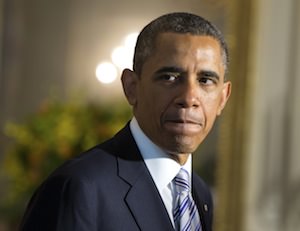Experts Don’t Buy Claim Syria Used Chemical Weapons
Late last week, some leading chemical weapons experts voiced skepticism about U.S. claims that the government of Syrian President Bashar al-Assad used sarin gas against rebels on at least four occasions this spring. Months of investigation have failed to uncover the telltale signs of an attack, they say.
Late last week, some leading chemical weapons experts voiced skepticism about U.S. claims that the government of Syrian President Bashar al-Assad used sarin gas against rebels on at least four occasions this spring. Months of investigation have failed to uncover the telltale signs of an attack, they say.
“It’s not unlike Sherlock Holmes and the dog that didn’t bark,” Jean Pascal Zanders, a former senior research fellow at the European Union’s Institute for Security Studies and a leading expert on chemical weapons, told the McClatchy news service. “It’s not just that we can’t prove a sarin attack, it’s that we’re not seeing what we would expect to see from a sarin attack.”
Those missing items include cellphone photos and videos taken in the alleged attacks’ immediate aftermaths.
“In a world where even the secret execution of Saddam Hussein was taped by someone, it doesn’t make sense that we don’t see videos, that we don’t see photos, showing bodies of the dead, and the reddened faces and the bluish extremities of the affected,” he said.
Other experts pointed out that the Obama administration has yet to give details of what evidence it uncovered and how it obtained it.
Philip Coyle, a senior scientist at the Center for Arms Control and Non-Proliferation in Washington, confirmed that it is difficult for experts to evaluate the validity of the administration’s claim without hard, public evidence. He said that what is known does not point to the use of sarin gas.
“Without blood samples, it’s hard to know,” he said. “But I admit I hope there isn’t a blood sample, because I’m still hopeful that sarin has not been used.”
McClatchy reported: “Even a proponent of the United States providing military assistance to the rebels raised doubts about the possible motive for announcing the chemical weapons conclusion.”
Only one detailed independent report of a chemical attack has surfaced since August 2012, when President Barack Obama announced that the use of such weapons would cross a “red line” that would make U.S. military involvement probable. A lengthy report published in Le Monde in May prompted French and British letters to the United Nations.
— Posted by Alexander Reed Kelly.
Your support matters…McClatchy:
Zanders, however, said that much about that report bears questioning. Photos and a video accompanying the report showed rebel fighters preparing for chemical attacks by wearing gas masks. Sarin is absorbed through the skin, and even small amounts can kill within minutes.
He also expressed skepticism about the article’s description of the lengthy route victims of chemical attacks had to travel to get to treatment, winding through holes in buildings, down streets under heavy fire, before arriving at remote buildings hiding hospitals.
… Zanders also said he’s skeptical of sarin use because there have been no reports of medical personnel or rescuers dying from contact with victims. Residue from sarin gas would be expected to linger on victims and would infect those helping, who often are shown in rebel video wearing no more protection than paper masks.
Le Monde reported that one doctor treated a victim with atropine, which is appropriate for sarin poisoning. But that doctor said he gave his patient 15 shots of atropine in quick succession, which Zanders said could have killed him almost as surely as sarin.
Independent journalism is under threat and overshadowed by heavily funded mainstream media.
You can help level the playing field. Become a member.
Your tax-deductible contribution keeps us digging beneath the headlines to give you thought-provoking, investigative reporting and analysis that unearths what's really happening- without compromise.
Give today to support our courageous, independent journalists.









You need to be a supporter to comment.
There are currently no responses to this article.
Be the first to respond.